The dentures are heterodont (more than a single tooth morphology): incisors, eyeteeth, premolars and molars. Most dogs have 42 teeth. The lower jaw has 22 teeth, the upper jaw 20; the lower jaw has two molars more: 12 incisors, 4 eyeteeth, 16 premolars and 10 molars (4 upper, 6 lower). The exceptions among dogs are dhole with 40 teeth, bush dog with 38 teeth and fox with bat-like ears that has 46–50 teeth. Among domestic dogs, Chow Chow has 44 teeth.
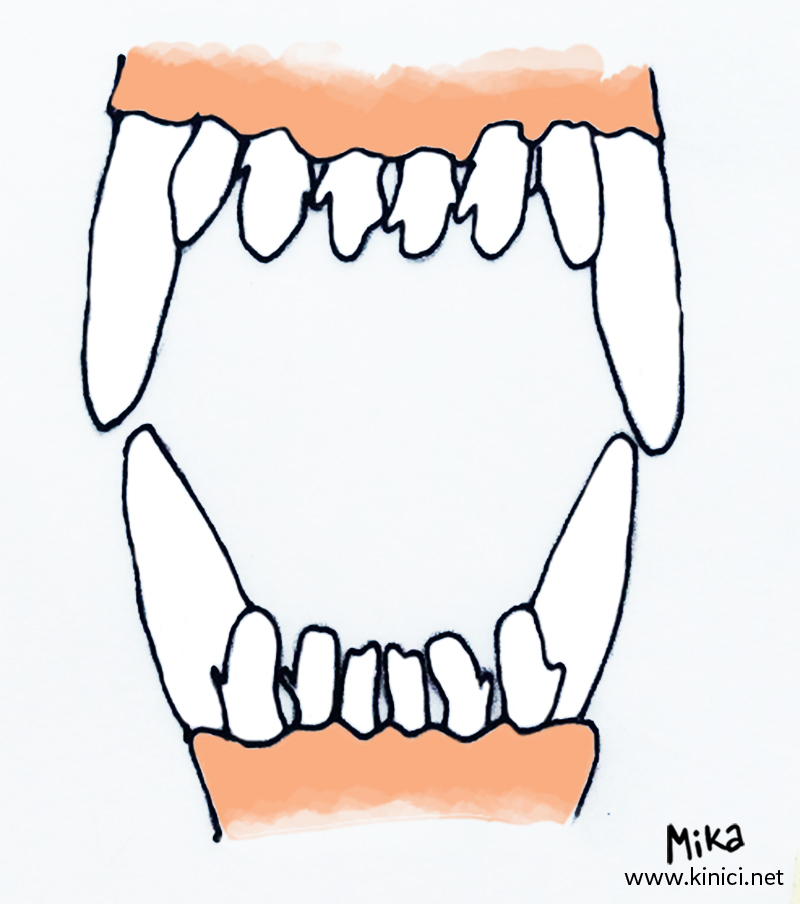 Humans have fewer teeth than dogs – 32, besides that, dog's teeth are firmer, more pointed, with bigger eyeteeth and stronger jaws.
Humans have fewer teeth than dogs – 32, besides that, dog's teeth are firmer, more pointed, with bigger eyeteeth and stronger jaws.
Front teeth (eyeteeth and incisors) are used to restrain, actually catching and detaining the prey. Eyeteeth are the largest teeth – upper ones are somewhat longer than lower ones – which length surpasses 5 cm in wolves. They are used for strong and dangerous bite for the prey. Incisors help eyeteeth with catching and retaining the prey, but their function is to strip, pull and remove flesh of the dead victim and to pluck fruit. Also, they are used for removing flesh off the bones, grinding bones and maintaining fur. Upper Incisors are bigger and stronger than lower.
From eyeteeth to the back of the jaw, serrated premolars are used for grinding food into smaller pieces. Their sharp edges cut through the flesh easily. Strong molars break and grind bones. The fourth upper premolar and the first lower molar are so-called cutters. They are bigger than the rest of the teeth and in the course of a bite they fit together like scissors. This is why they are also used for tearing the skin and flesh.
There are 28 baby teeth, 14 in the upper and 14 in the lower jaw: 12 incisors, 4 eyeteeth and 12 premolars. They all grow between 6 and 8 weeks. They are significantly smaller and narrower than secondary teeth, with weaker roots and sharper crowns. There are no primary molars. Their teeth begin replacing at age of three or four months. Four moths old, their upper four baby incisors are fallen out and usually already replaced with four secondary incisors. Upper eyeteeth are usually half-grown by the time they are five and a half months old. All teeth are replaced by the time they are six or seven months old. Ageing of the teeth depends on the type of the dentures, inherited quality of the teeth, type of food the dog eats...
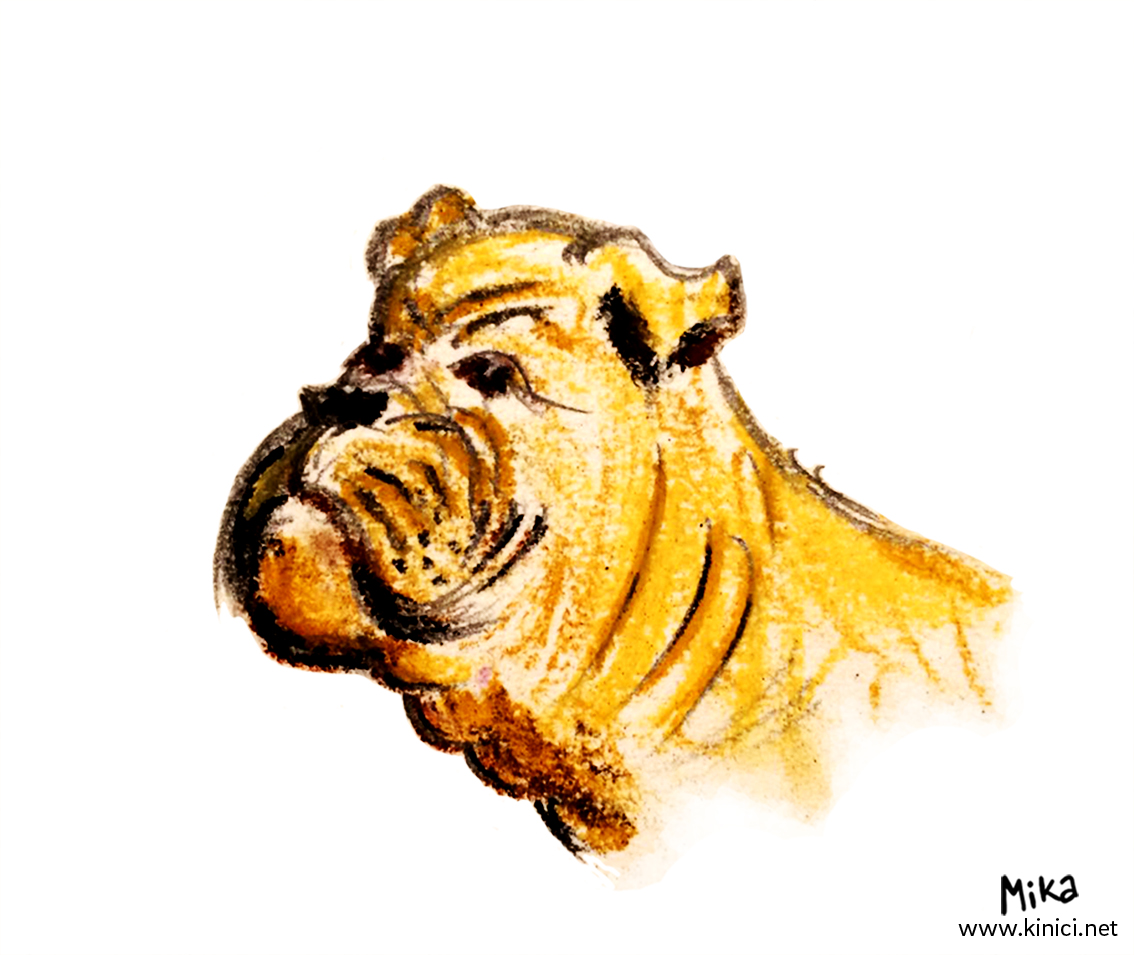
 Snout and bite
Snout and bite
The strength of the bite exceeds one hundred kilograms per centimetre squared. In some larger dogs, mastiff-type, the strength of the bite measured is around one hundred and fifty kilograms per centimetre squared. Still, the strongest bite belongs to canid with elongated snout – the wolf.
Dentures
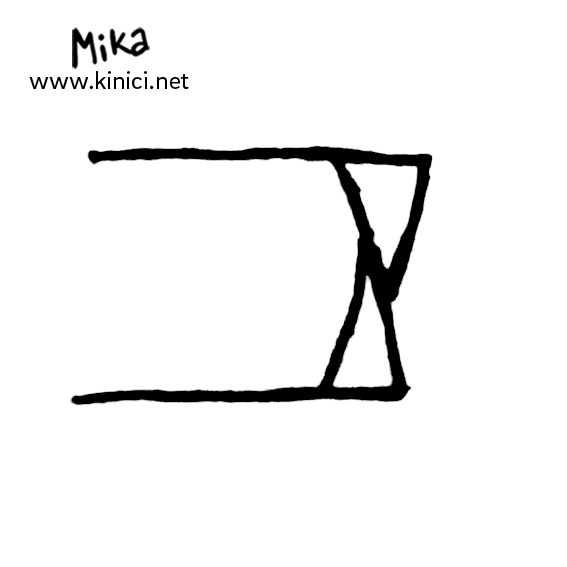 1. Scissor-like – proper dentures. Upper and lower jaw fit in such way that inner side of top incisors touches outer side of bottom incisors
1. Scissor-like – proper dentures. Upper and lower jaw fit in such way that inner side of top incisors touches outer side of bottom incisors
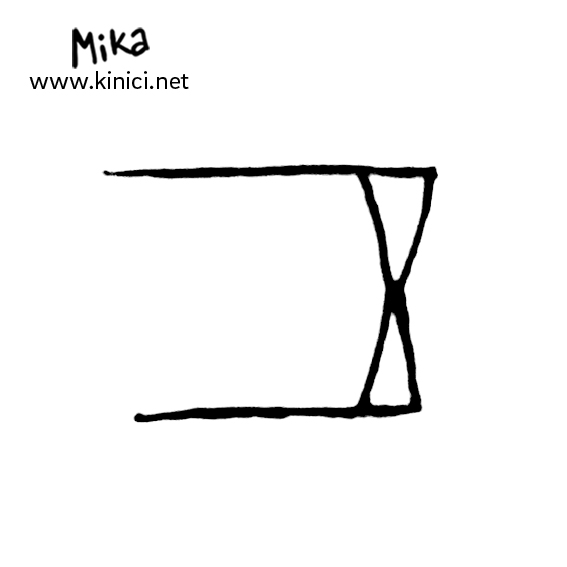 2. Pliers-like – In the course of the bite, top and bottom incisors touch with crowns
2. Pliers-like – In the course of the bite, top and bottom incisors touch with crowns
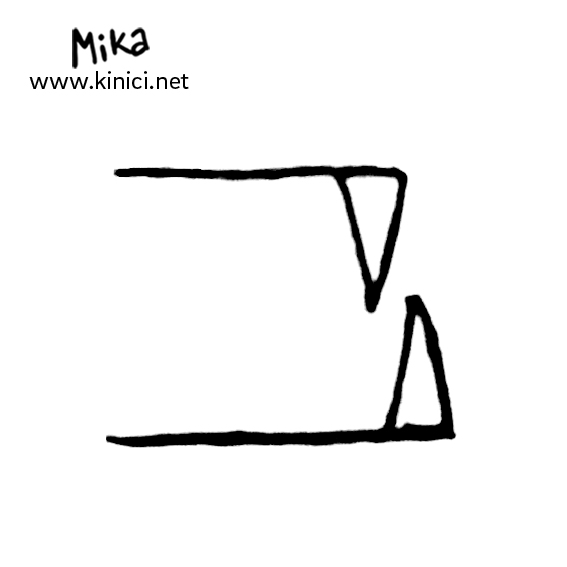 3. Overbite – In the course of the bite there is no contact between top and bottom incisors since the bottom ones are far in font of the top ones
3. Overbite – In the course of the bite there is no contact between top and bottom incisors since the bottom ones are far in font of the top ones
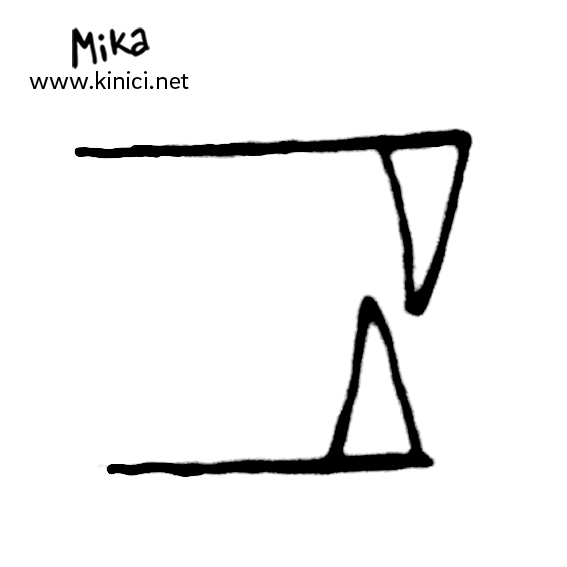 4. Underbite – In the course of the bite there is no contact between top and bottom incisors since the top ones are far in front of the bottom ones
4. Underbite – In the course of the bite there is no contact between top and bottom incisors since the top ones are far in front of the bottom ones
